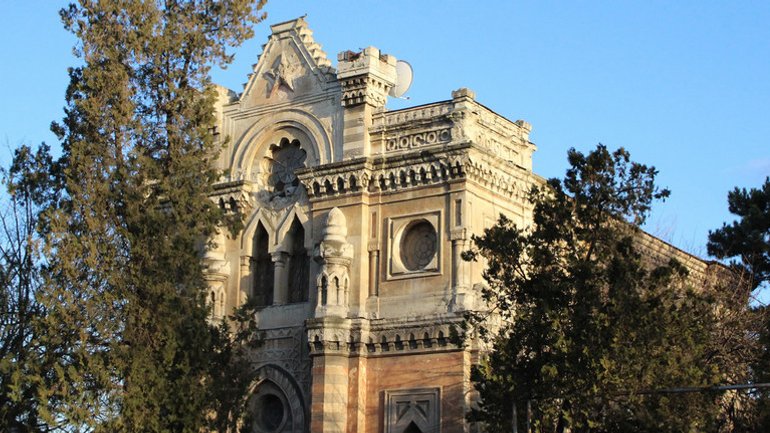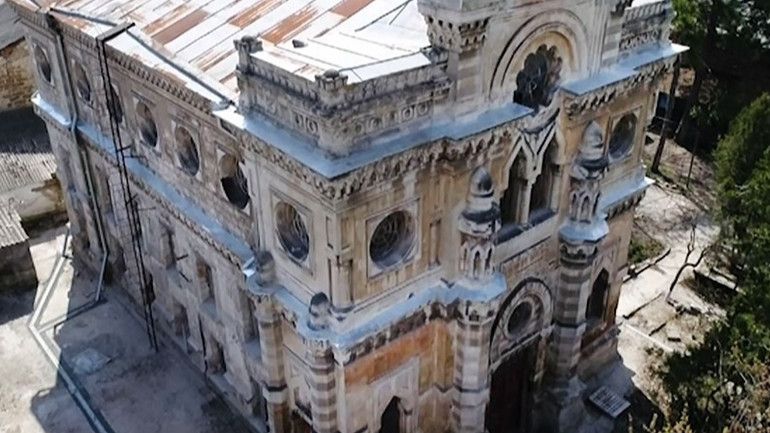Karaite Kenesa in Simferopol begins to collapse

This was reported by activists of the publication “Voice of Crimea”, UP Life reports.
The reconstruction of the interior and repair of the facade of the kenesa took place in 2017 at the request of the Russian “State Committee for the Protection of the Cultural Heritage of the Republic of Crimea”. In 2022, local authorities announced the completion of “restoration work” and, allegedly, the restoration of the “historical appearance” of the building and the surrounding area.
According to the activists, Maksym Soroka, head of the Directorate of Centralized Services and Development of Cultural Institutions of Crimea, convinces locals that the “Ministry of Culture of Crimea” has the situation under control. The destruction, in his opinion, “does not affect the structural part of the building.”
History of the Karaite Kenesa
The Karaite Kenesa was built in 1896. The main building material was stone quarried on the banks of the Bodrak River. The altar of the Simferopol kenesa differed from other places of worship of the time: due to the peculiarities of the terrain, it was oriented towards Mecca, not Jerusalem.

In 1930, the kenesa was closed, and a Karaite club operated in the building. The club existed for three years, and then the temple was rebuilt, with the interior and exterior decoration partially removed.
After 1936, the building housed the radio broadcasting office of the Crimean TV and Radio Center, with a break during the German occupation of Crimea in 1941-1944 during World War II. After Ukraine gained independence in 1991, the Karaite community tried to reclaim their right to use the building.
On 7 October 2012, a prayer service was held on the third floor of the building, which had been returned to the community. It was the first service in over 80 years. The following year, the Crimean State Television and Radio Company transferred the entire building to the community.
In 2014, "the ‘Council of Ministers of the Republic of Crimea’ established by the Russian occupiers transferred the kenesa building to the Simferopol Cholpan Karaite religious community by its ‘decree’ No. 667-r dated 15 July 2014. In the autumn of the same year, the congregation renovated one of the rooms on the first floor of the building for worship," the Voice of Crimea reported.
The restoration in 2017-2018 cost the Russians RUB 130 million (about 65 million hryvnias). The work was sponsored by representatives of the “Federal Targeted Programme for the Development of Crimea”. At that time, the “restorers” did not restore the two domes on the roof and the six-pointed star on the pediment. They also dismantled the original carved doors and the original window grilles.
Who are the Karaites?
The Karaites are a Turkic indigenous people of Ukraine who have lived on the Crimean peninsula since the 13th century. Previously, there were large Karaite communities in the cities of Galicia, as well as in Lutsk, Kyiv and Odesa.
According to Ukraïner journalists, there are about 1,000 Karaites left today. Most of them live in the temporarily occupied Crimea.
“The core of the Karaite community is their beliefs: they recognize the Torah, rejecting its dogmatic interpretations by religious institutions, for they believe that the one who reads it should interpret it,” the publication explained.









